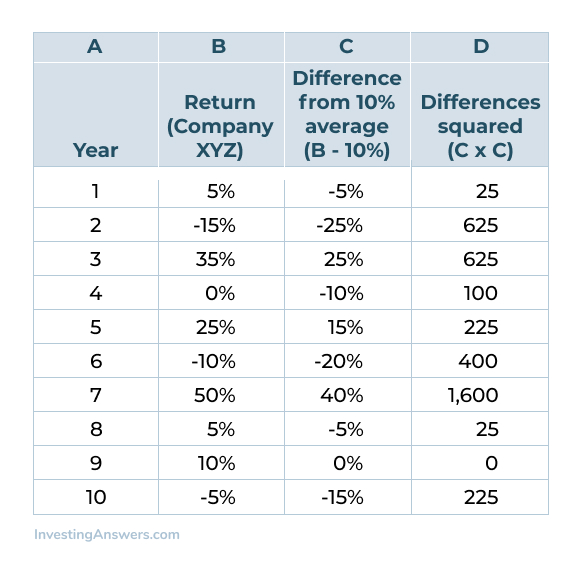

You can also use one of the tools wealth managers often include on their websites. To properly determine your risk tolerance, you should speak to a financial advisor. Image Source: rawpixel – / License: CC0 Public Domain You should never be in a situation where you can lose enough capital to cause you to make irrational decisions. Losing more money than you are comfortable with can result in stress and irrational decision making. Losing too much money late in your career may mean your portfolio will never recover. A portfolio needs to be constructed with this in mind.īefore constructing a portfolio, you need to work out how much you can afford to lose, both financially and psychologically.
Weighted standard deviation portfolio how to#
How to manage the risk of your investment portfolio.How to measure the risk of your investment portfolio.In this post we discuss the ways in which portfolio risk can be calculated and managed. Knowing and managing investment portfolio risk is the most important factor in growing and preserving capital. Image Source: Wokandapix – / License: CC0 Public Domain And then the portfolio risk needs to be calculated to make sure it lies within that level of risk. For any portfolio, the appropriate level of risk must first be determined. Investors are rewarded with returns for taking on risk – but that risk must be managed. As discussed in the next post we are actually interested in how randomly selected portfolio ’s out- or underperformance deviates from the benchmark.Investors all face a trade-off between risk and return. This is a measure of the amount by which a randomly selected stock’s out- or underperformance deviates from the benchmark, on average. The market cap-weighted benchmark return is calculated asīenchmark return \(= \sum _ \). Th e stock weights and benchmarks returns for a measurement period are given in the graphs below: Stock C and D have market caps of 10% and 5% respectively of the total market.

Stock A and Stock B have market caps equal to 45% and 35% respectively of the market’s total capitalisation. We consider a simplified stock market which consists of two large-capitalisations (cap) and two small-cap stocks.

The analysis is also applicable when we compare managers against their peers. However, as preparation, we first consider market dispersion from a stock perspective.Īs before, performance is measured against the unbiased market-capitalisation (market-cap) weighted benchmark. If we want to examine how market dispersion affects manager outperformance we have to measure the dispersion of active portfolio returns instead. This measure describes the dispersion in individual stock returns. Here we explain the methodology for calculating an asset-weighted standard deviation of share returns, often also referred to as the cross-sectional standard deviation. Opportunities for successful security selection abounds when market dispersion is high, as discussed before. Market dispersion refers to the variation in returns of the market’s underlying securities.


 0 kommentar(er)
0 kommentar(er)
